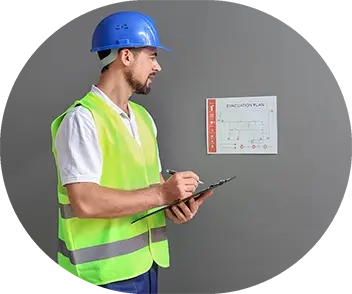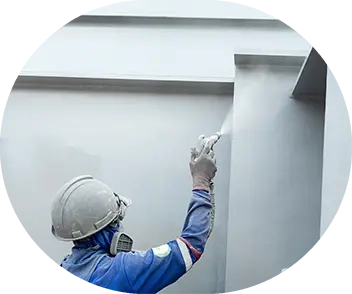Understanding Canadian Standards of Fire Safety
When it comes to American and Canadian fire safety guidelines, there can often be overlap between the standards of these two countries. Many of the established Canadian fire standards and US fire standards evolved together.
Fire codes exist worldwide to make sure that professionals in the construction industry are keeping up the quality and safety in their projects.
The NFPA (National Fire Protection Association) has provided over 300 fire safety codes and standards incorporated in fire safety practices globally. As such, the standards across countries can be very similar.
However, there is still some variance between US standards and Canadian standards, which should be differentiated as professional collaborations in construction are formed between these two countries. This article aims to discuss the similarities and differences between US and Canadian fire safety.

The NFC (National Fire Code of Canada 2015) depicts the latest known guidelines as written by the Canadian Commission of Building and Fire Codes. This document defines the criteria for minimum fire safety in a Canadian construction project. New changes are implemented approximately every five years to ensure safety standards are updated along with modern technology.
Many standards relate to best practices involving “combustible construction.” For example, wood buildings qualify as combustible construction. Extra measures have been established in the NFC to ensure additional precautions, such as passive measures like fireproof coatings or active measures like indoor sprinkler systems.
As a whole, the NFC regulates Canadian construction related to fire hazards in current and future buildings.
No matter which country you are based in, it is important to be familiar with that region’s safety codes and standards as violations can lead to severe issues and delays in your project.
UL is a well-known organization with the aim to improve the safety and quality of technology. A UL mark on a fireproofing product indicates that the product in question has been thoroughly tested for safety and can be used in a project with confidence.
ANSI (American National Standards Institute) is responsible for assessments of standards in America, and therefore UL accreditation. In Canada, this role of accreditation is overseen by the SCC (Standards Council of Canada). This high standard of accreditation allows international consumers of UL approved products to feel confident in the high quality of the technology of choice.
In the context of fire safety, a quality product, such as intumescent paint, should be thoroughly tested before application in construction. A UL or ULC mark indicates compliance with many American and Canadian codes, respectively.
Sometimes materials with UL compliance are in line with Canadian testing, however, there is no guarantee. In these cases, it is crucial to ensure UL standards are compatible with the codes of a project. Meanwhile, a ULC mark indicates that the product has been considered for Canadian consumers and should be applicable in Canadian projects. As such, products marked as ULC may be applicable in products outside of Canada.

CAN/UL S101-14 Standard Methods of Fire Endurance Tests of Building Construction and Materials Fifth Edition is a fire endurance standard that covers walls, floors, roofs, ceilings, and other assemblies such as columns, beams, grinder and other components in Canadian construction.
According to the NBC (National Building Code of Canada), a substrate’s fire endurance is defined by the amount of time in minutes or hours that it can withstand fire transmission of heat when exposed to an active flame. These standards are established with the CAN/UL S101-14 test.
This Canadian fire endurance test is comparable to the American ASTM E119 test, which denotes how long a substrate maintains its structural integrity when exposed to flame.
At FlameOFF® we recognize the importance of product accreditation. Diverging rules across countries can cause roadblocks in the fireproofing process. Using a product that lacks proper testing can cause delays and many more unnecessary expenses for the construction team.
Our company is dedicated to creating passive fire protection products that meet the appropriate building standards. We aim to ease the roles of construction professionals across countries with proper testing and accreditation.
Our product FlameOFF ® Fire Barrier Paint is ULC certified, having passed CAN/UL S101 testing. This innovative coating provides up to 2 hours of fire protection on steel and gypsum and can improve the fire rating of your project.
If you are looking for a fire safety product compatible with Canadian standards, our intumescent paint is a great option. Learn more about FlameOFF® Fire Barrier Paint.